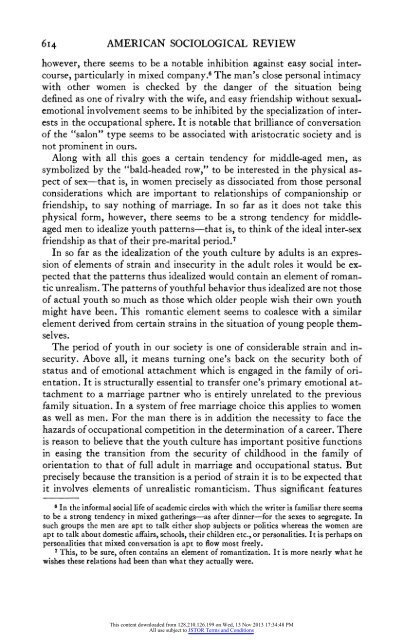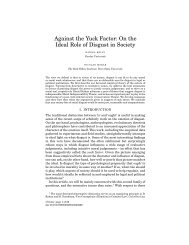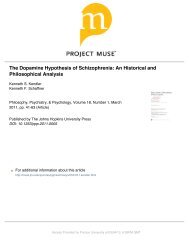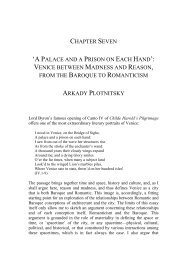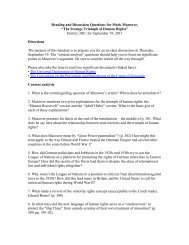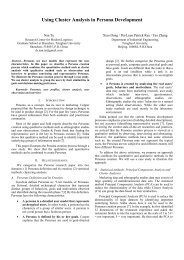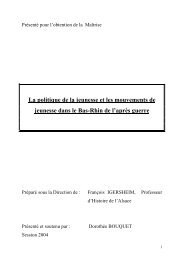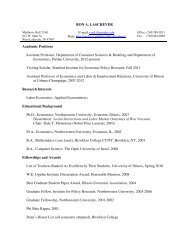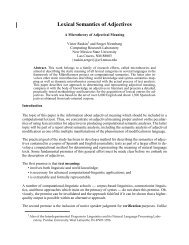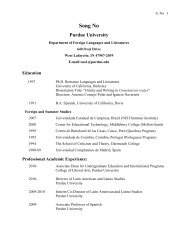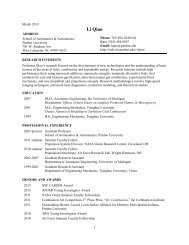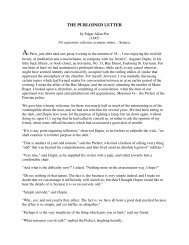Parsons 1942 - Career Account Web Pages
Parsons 1942 - Career Account Web Pages
Parsons 1942 - Career Account Web Pages
You also want an ePaper? Increase the reach of your titles
YUMPU automatically turns print PDFs into web optimized ePapers that Google loves.
614 AMERICAN SOCIOLOGICAL REVIEW<br />
however, there seems to be a notable inhibition against easy social intercourse,<br />
particularly in mixed company.' The man's close personal intimacy<br />
with other women is checked by the danger of the situation being<br />
defined as one of rivalry with the wife, and easy friendship without sexualemotional<br />
involvement seems to be inhibited by the specialization of interests<br />
in the occupational sphere. It is notable that brilliance of conversation<br />
of the "salon" type seems to be associated with aristocratic society and is<br />
not prominent in ours.<br />
Along with all this goes a certain tendency for middle-aged men, as<br />
symbolized by the "bald-headed row," to be interested in the physical aspect<br />
of sex-that is, in women precisely as dissociated from those personal<br />
considerations which are important to relationships of companionship or<br />
friendship, to say nothing of marriage. In so far as it does not take this<br />
physical form, however, there seems to be a strong tendency for middleaged<br />
men to idealize youth patterns-that is, to think of the ideal inter-sex<br />
friendship as that of their pre-marital period.7<br />
In so far as the idealization of the youth culture by adults is an expression<br />
of elements of strain and insecurity in the adult roles it would be expected<br />
that the patterns thus idealized would contain an element of romantic<br />
unrealism. The patterns of youthful behavior thus idealized are not those<br />
of actual youth so much as those which older people wish their own youth<br />
might have been. This romantic element seems to coalesce with a similar<br />
element derived from certain strains in the situation of young people themselves.<br />
The period of youth in our society is one of considerable strain and insecurity.<br />
Above all, it means turning one's back on the security both of<br />
status and of emotional attachment which is engaged in the family of orientation.<br />
It is structurally essential to transfer one's primary emotional attachment<br />
to a marriage partner who is entirely unrelated to the previous<br />
family situation. In a system of free marriage choice this applies to women<br />
as well as men. For the man there is in addition the necessity to face the<br />
hazards of occupational competition in the determination of a career. There<br />
is reason to believe that the youth culture has important positive functions<br />
in easing the transition from the security of childhood in the family of<br />
orientation to that of full adult in marriage and occupational status. But<br />
precisely because the transition is a period of strain it is to be expected that<br />
it involves elements of unrealistic romanticism. Thus significant features<br />
6<br />
In the informal social life of academic circles with which the writer is familiar there seems<br />
to be a strong tendency in mixed gatherings-as after dinner-for the sexes to segregate. In<br />
such groups the men are apt to talk either shop subjects or politics whereas the women are<br />
apt to talk about domestic affairs, schools, their children etc., or personalities. It is perhaps on<br />
personalities that mixed conversation is apt to flow most freely.<br />
7This, to be sure, often contains an element of romantization. It is more nearly what he<br />
wishes these relations had been than what they actually were.<br />
This content downloaded from 128.210.126.199 on Wed, 13 Nov 2013 17:34:48 PM<br />
All use subject to JSTOR Terms and Conditions


